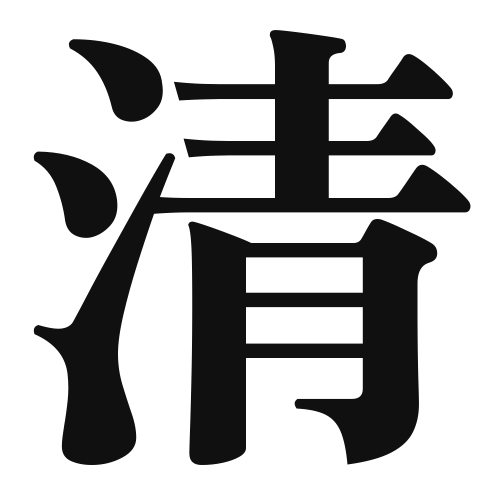1. Overview of Meaning
The kanji “清” (pronounced “sei” or “shou”) means “clear,” “pure,” or “clean.” It conveys a sense of clarity and freshness, often associated with water or cleanliness.
2. Formation and Radical
The kanji “清” is a phonetic-ideographic character (形声文字), which combines both meaning and sound. The left part, “氵” (water radical), indicates a relationship to water, while the right part, “青,” suggests the idea of something being clear or blue.
The radical of “清” is “氵,” which is a variant of the radical for water, emphasizing its connection to purity and cleanliness.
3. Examples of Usage
Common words and phrases that include “清” are:
- 清水 (せいすい, seisu) – clear water
- 清掃 (せいそう, seisou) – cleaning
- 清潔 (せいけつ, seiketsu) – cleanliness
Example sentence in daily conversation:
「この川の水はとても清いです。」(このかわのみずはとてもきよいです。) – “The water in this river is very clear.”
4. Synonyms and Antonyms
Similar kanji with related meanings include:
- 純 (じゅん, jun) – pure, which emphasizes the absence of impurities.
- 明 (めい, mei) – bright, which relates to clarity but in a different context.
Antonyms include:
- 濁 (だく, daku) – muddy or turbid, which means unclear or dirty.
5. Cultural and Historical Background
The kanji “清” has significant ties to Japanese culture, often used in contexts related to cleanliness and purity, which are highly valued in Japanese society. It appears in various proverbs and idiomatic expressions, such as:
- 清く正しく美しく (きよくただしくうつくしく) – “Be pure, just, and beautiful,” which is a guiding principle in Japanese ethics.
Overall, “清” embodies the cultural emphasis on purity and clarity, reflecting the aesthetic values of Japan.
